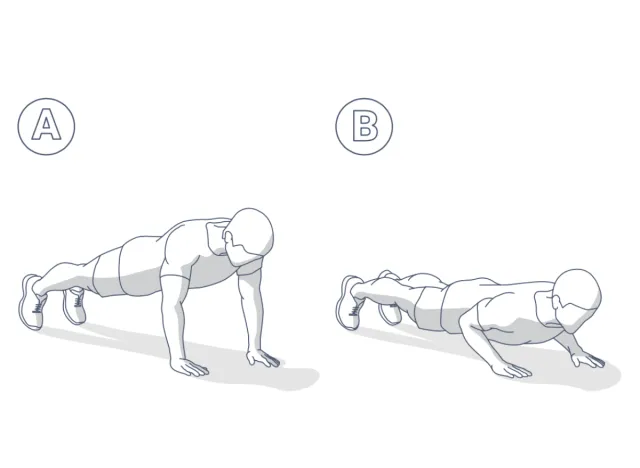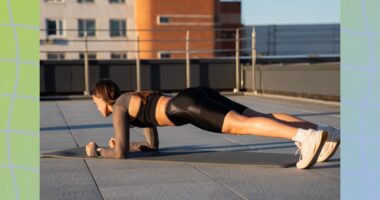Today, we’re diving into a crucial aspect of your training: arm strength drills. These drills are the secret sauce that can take your upper-body workout from good to great, helping you maximize efficiency, prevent injuries, and enhance performance. Whether you’re gearing up for a strength training session, hitting the gym, or preparing for a sport, these drills to test your arm strength are your pre-game warm-up MVPs. They prime your muscles and fine-tune your movement patterns, setting the stage for a killer workout ahead.
Arm strength drills aren’t just about going through the motions; they’re about activating the right muscles, improving your range of motion, and getting your mind and body in sync. So, before you jump straight into heavy lifts or intense workouts, take a few minutes to incorporate the below arm strength drills into your routine.
Pushup Test
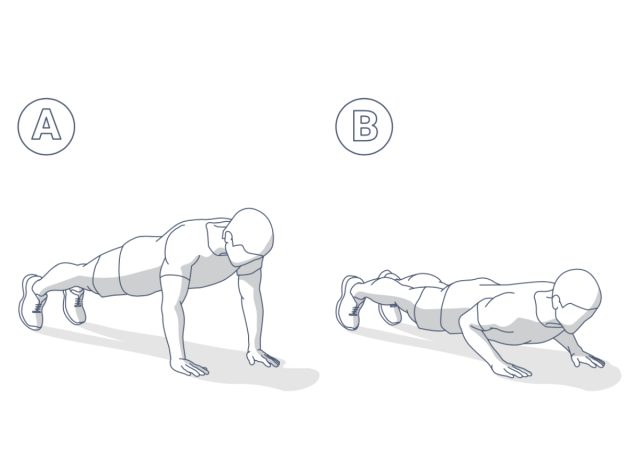

Pushups are a classic exercise that tests your upper-body strength and endurance. This exercise primarily targets the chest, shoulders, and triceps, but it also engages the core muscles to maintain a plank position.
Performing pushups can reveal imbalances in your upper-body strength and highlight areas that need improvement. Moreover, because pushups are bodyweight exercises, they can be performed anywhere, making them a convenient and effective way to assess your fitness level.
- Start in a plank position with your hands slightly wider than shoulder-width apart and your body in a straight line from your head to your heels.
- Lower your body until your chest nearly touches the floor by bending your elbows.
- Push back up to the starting position by straightening your arms.
- Perform as many push-ups as possible in one minute, maintaining proper form throughout.
Plank-to-Pushup
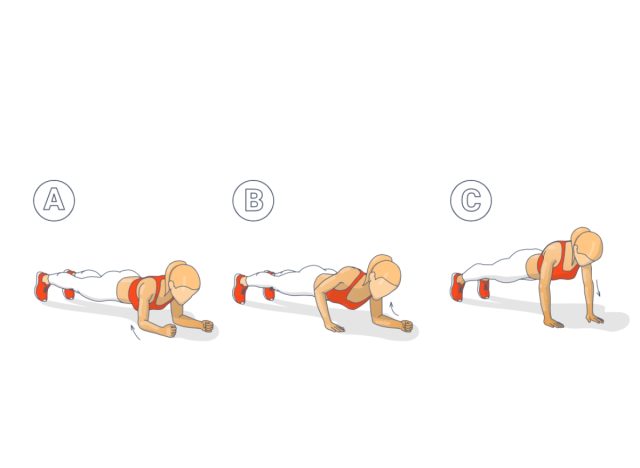

The plank-to-pushup exercise is a dynamic movement that tests both core and upper-body strength. By transitioning from a forearm plank to a high plank (push-up) position, you engage not only your core muscles but also your chest, shoulders, and triceps.
This drill helps improve muscle endurance and coordination, as well as stability in the shoulders and core. It’s an excellent way to gauge your ability to maintain control and proper form under fatigue.
- Start in a forearm plank position with your body in a straight line from your head to your heels.
- Push up onto your hands one at a time to transition into a high plank position.
- Lower back down onto your forearms one at a time.
- Repeat this movement as many times as possible in one minute, keeping your core engaged.
Tricep Dips
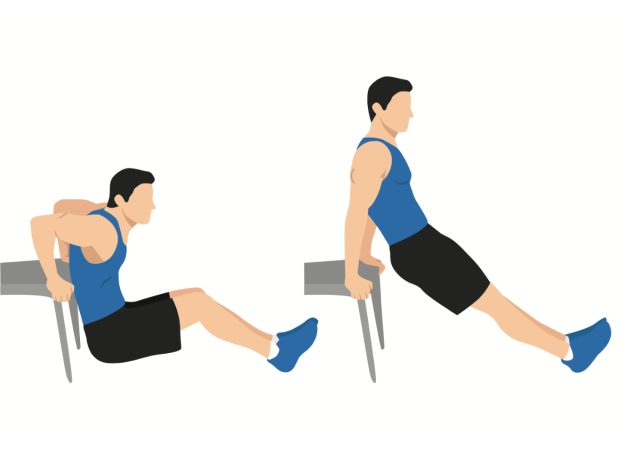

Tricep dips are an effective way to test the strength and endurance of your triceps, the muscles located on the back of your upper arms. This exercise also engages your shoulders and chest to a lesser extent.
Performing tricep dips can highlight weaknesses in your arm extension and pushing strength, which is crucial for many daily activities and upper-body exercises. Additionally, this movement helps improve shoulder stability and overall upper-body coordination.
- Sit on the edge of a sturdy chair or bench with your hands gripping the edge beside your hips.
- Slide your hips off the edge and lower your body by bending your elbows to about 90 degrees.
- Push back up to the starting position.
- Perform as many tricep dips as possible in one minute, keeping your back close to the bench.
Bicep Curl Test
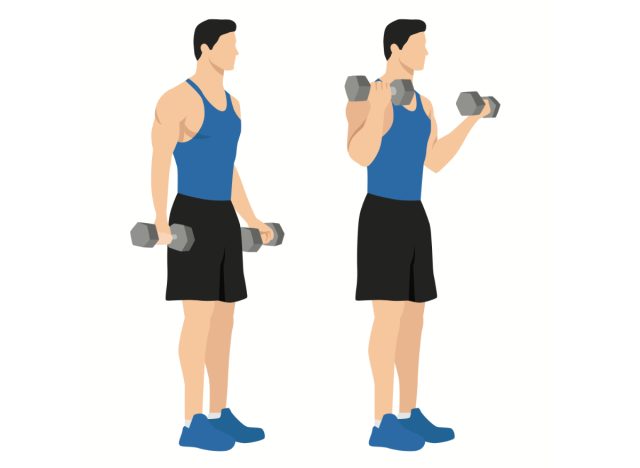

The bicep curl test focuses on the strength of your biceps, which are responsible for elbow flexion. Strong biceps are essential for lifting and carrying objects, as well as performing various pulling movements.
This exercise not only assesses the strength of your biceps but also your grip strength and forearm stability. Regularly testing your bicep strength can help you identify imbalances between your left and right arms and ensure you’re making balanced progress in your training.
- Stand with your feet shoulder-width apart, holding a pair of dumbbells at your sides.
- Curl the dumbbells up toward your shoulders by bending your elbows.
- Lower the dumbbells back down to the starting position.
- Perform as many bicep curls as you can in one minute, using a weight that challenges you but allows for proper form.
Overhead Press
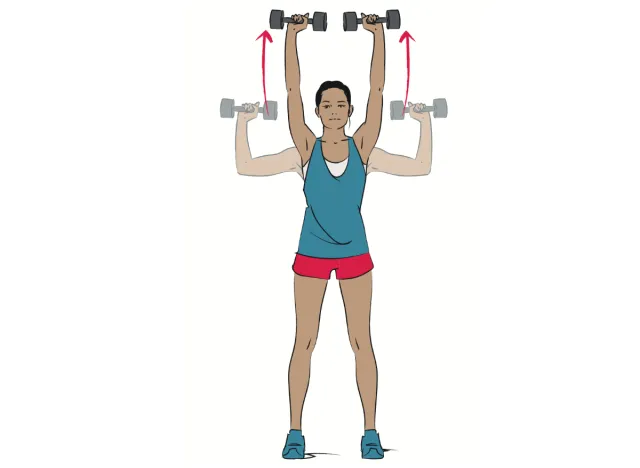

The overhead press is a fundamental exercise that tests the strength and endurance of your shoulder muscles, particularly the deltoids. It also engages the triceps and upper chest, making it a comprehensive upper-body strength test.
This exercise is crucial for assessing your ability to perform overhead movements, which are common in both daily activities and various sports. Testing your overhead press strength can help you identify weaknesses and imbalances, ensuring you build a well-rounded upper body.
- Stand with your feet shoulder-width apart, holding a pair of dumbbells at shoulder height with your palms facing forward.
- Press the dumbbells overhead until your arms are fully extended.
- Lower the dumbbells back to shoulder height.
- Perform as many overhead presses as possible in one minute, maintaining proper form.
Lateral Raise
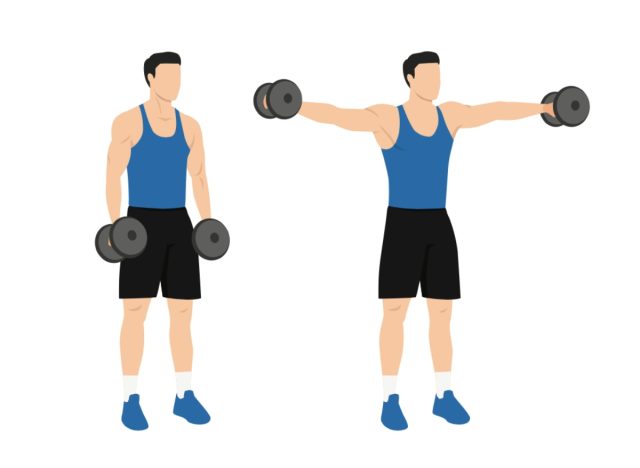

Lateral raises are designed to test the strength and stability of your shoulder muscles, particularly the lateral deltoids. Strong shoulders are essential for a wide range of upper body movements and help protect your shoulder joints from injury.
This exercise also helps improve your shoulder range of motion and can highlight imbalances in your shoulder strength. By regularly performing lateral raises, you can ensure your shoulder muscles are strong and stable, supporting your overall upper-body strength.
- Stand with your feet shoulder-width apart, holding a pair of dumbbells at your sides.
- Lift the dumbbells out to the sides until your arms are parallel to the floor.
- Lower the dumbbells back to the starting position.
- Perform as many lateral raises as possible in one minute, keeping your core engaged.
Dumbbell Punches
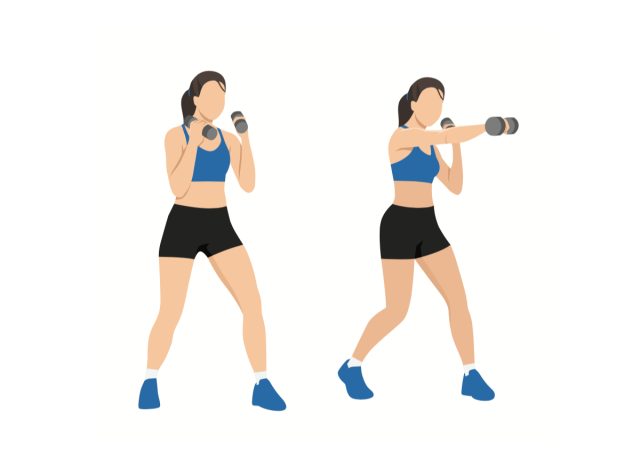

Dumbbell punches test the endurance and coordination of your shoulder and arm muscles. This exercise mimics the movements used in various sports, such as boxing and tennis, making it a functional test of your upper body strength and speed.
By performing dumbbell punches, you can assess your ability to maintain power and precision over time, which is crucial for both athletic performance and everyday activities that require quick, repetitive arm movements.
- Stand with your feet shoulder-width apart, holding a pair of light dumbbells at your shoulders.
- Extend one arm forward in a punching motion, then quickly retract it while extending the other arm.
- Continue alternating punches as quickly as possible for one minute, keeping your movements controlled.
Bent-over Rows
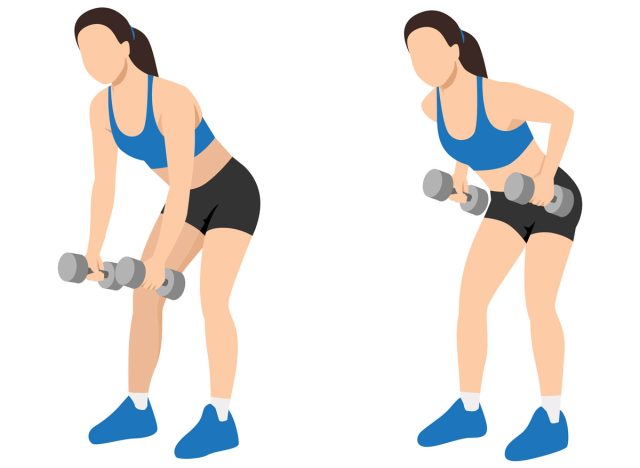

Bent-over rows are an excellent test of your upper back and bicep strength. This exercise engages the muscles of the upper back, including the rhomboids and trapezius, as well as the biceps.
Strong upper back muscles are essential for maintaining good posture and performing pulling movements. By testing your strength with bent-over rows, you can identify weaknesses in your upper back and biceps, ensuring you develop balanced upper-body strength.
- Stand with your feet shoulder-width apart, holding a pair of dumbbells.
- Bend at the hips and knees, keeping your back straight and dumbbells hanging in front of you.
- Pull the dumbbells toward your hips, squeezing your shoulder blades together.
- Lower the dumbbells back to the starting position.
- Perform as many bent-over rows as you can in one minute.
Arnold Press
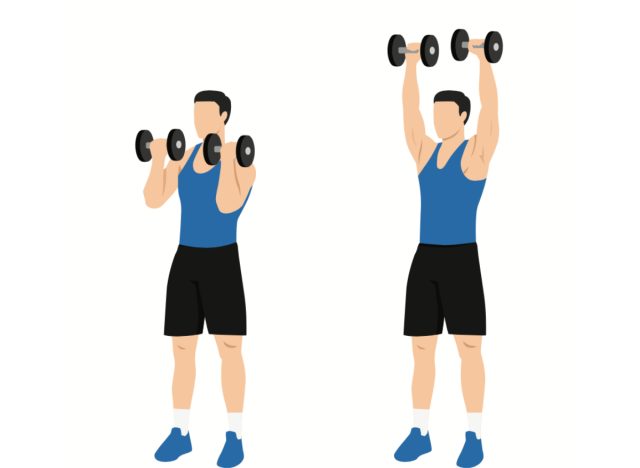

The Arnold press is a variation of the traditional overhead press that targets the shoulder muscles, particularly the deltoids, while also engaging the biceps. This exercise involves a rotational movement that challenges your shoulder stability and coordination.
By testing your strength with the Arnold press, you can assess your ability to perform complex upper-body movements that require strength and control. This exercise also helps improve your shoulder range of motion and overall upper body endurance.
- Stand with your feet shoulder-width apart, holding a pair of dumbbells at shoulder height with your palms facing your body.
- Rotate your palms away from your body as you press the dumbbells overhead.
- Reverse the motion to return to the starting position.
- Perform as many Arnold presses as possible in one minute, maintaining proper form.
Resistance Band Pull-aparts
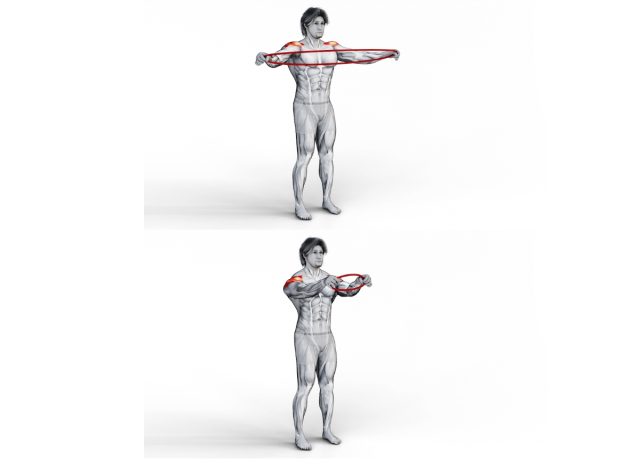

Resistance band pull-aparts are a great way to test the strength and stability of your shoulder and upper back muscles. This exercise targets the muscles responsible for scapular retraction, which is crucial for maintaining good posture and preventing shoulder injuries.
By performing resistance band pull-aparts, you can assess your shoulder stability and upper back strength, ensuring these muscles are strong and functional. This exercise also helps improve your shoulder range of motion and overall upper-body coordination.
- Stand with your feet shoulder-width apart, holding a resistance band with both hands in front of you at shoulder height.
- Pull the band apart by extending your arms to the sides, squeezing your shoulder blades together.
- Return to the starting position.
- Perform as many pull-aparts as possible in one minute, keeping your movements controlled.

